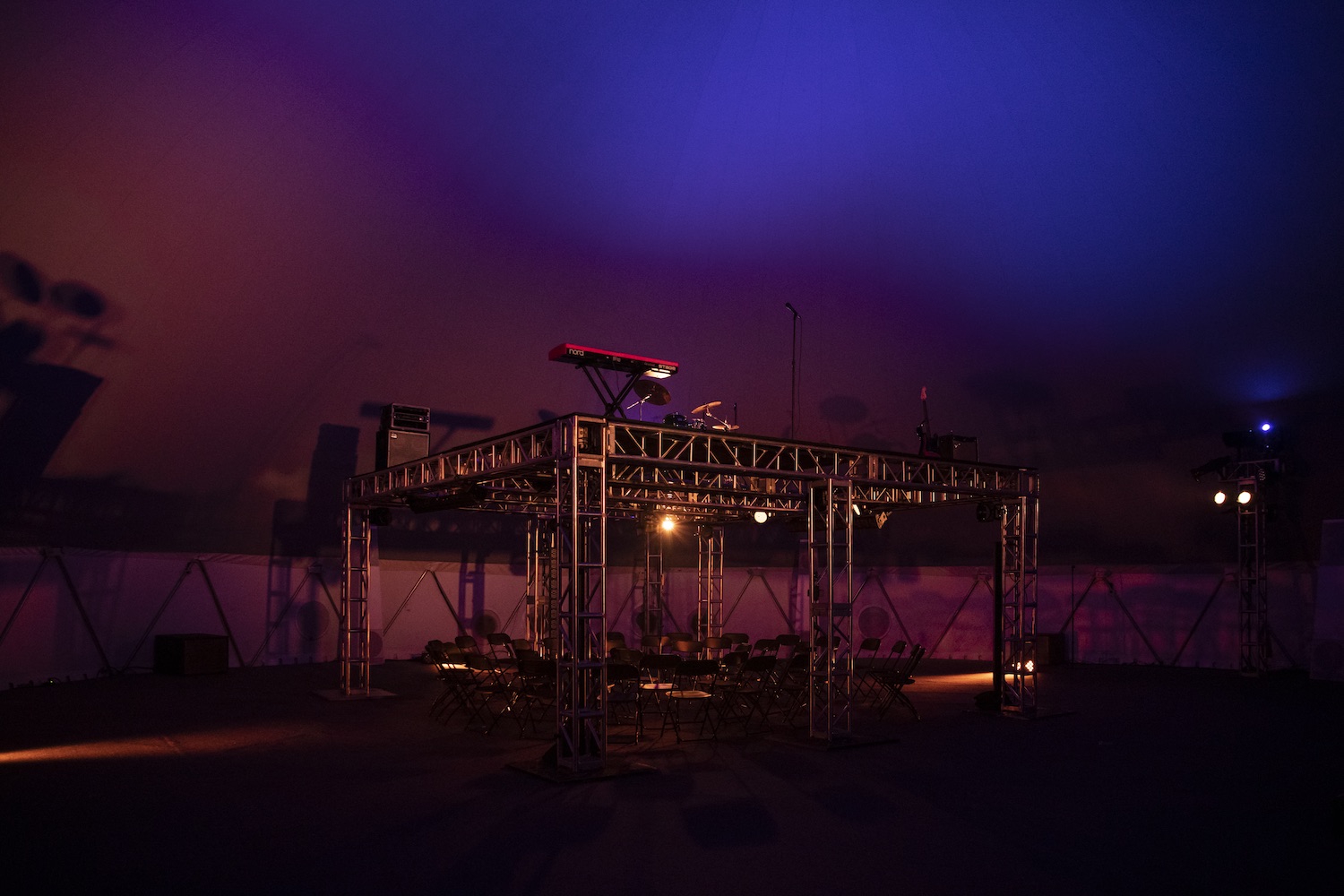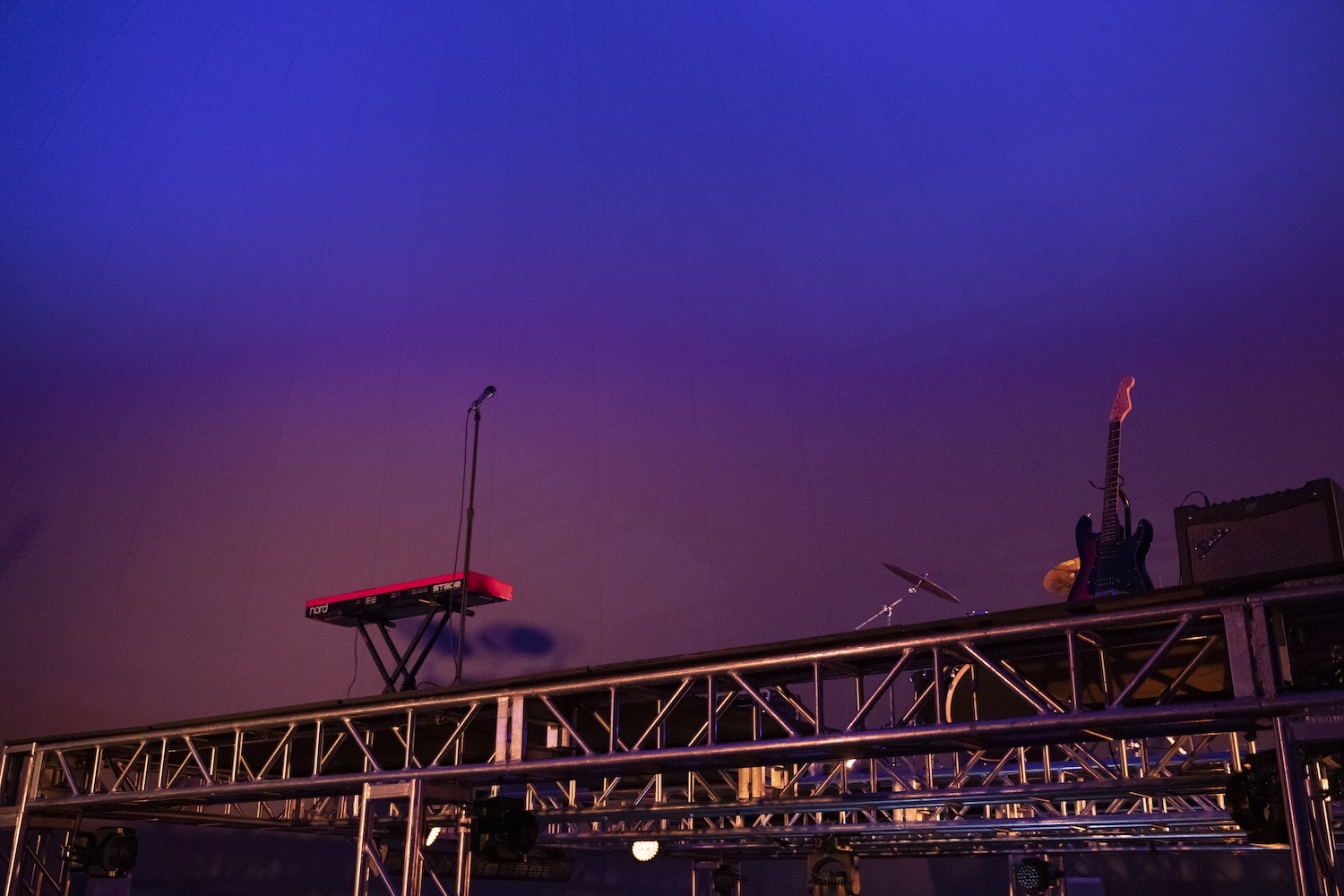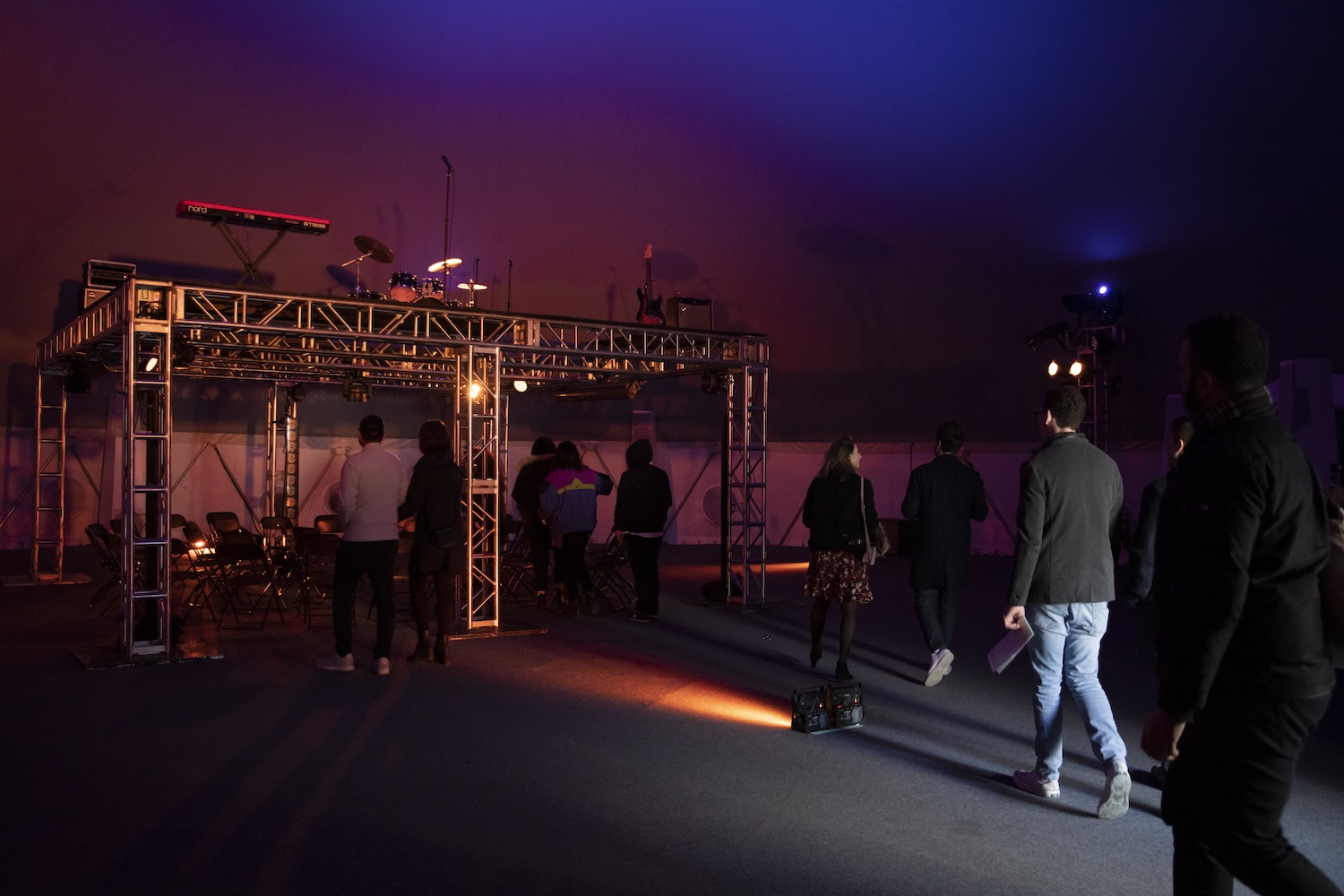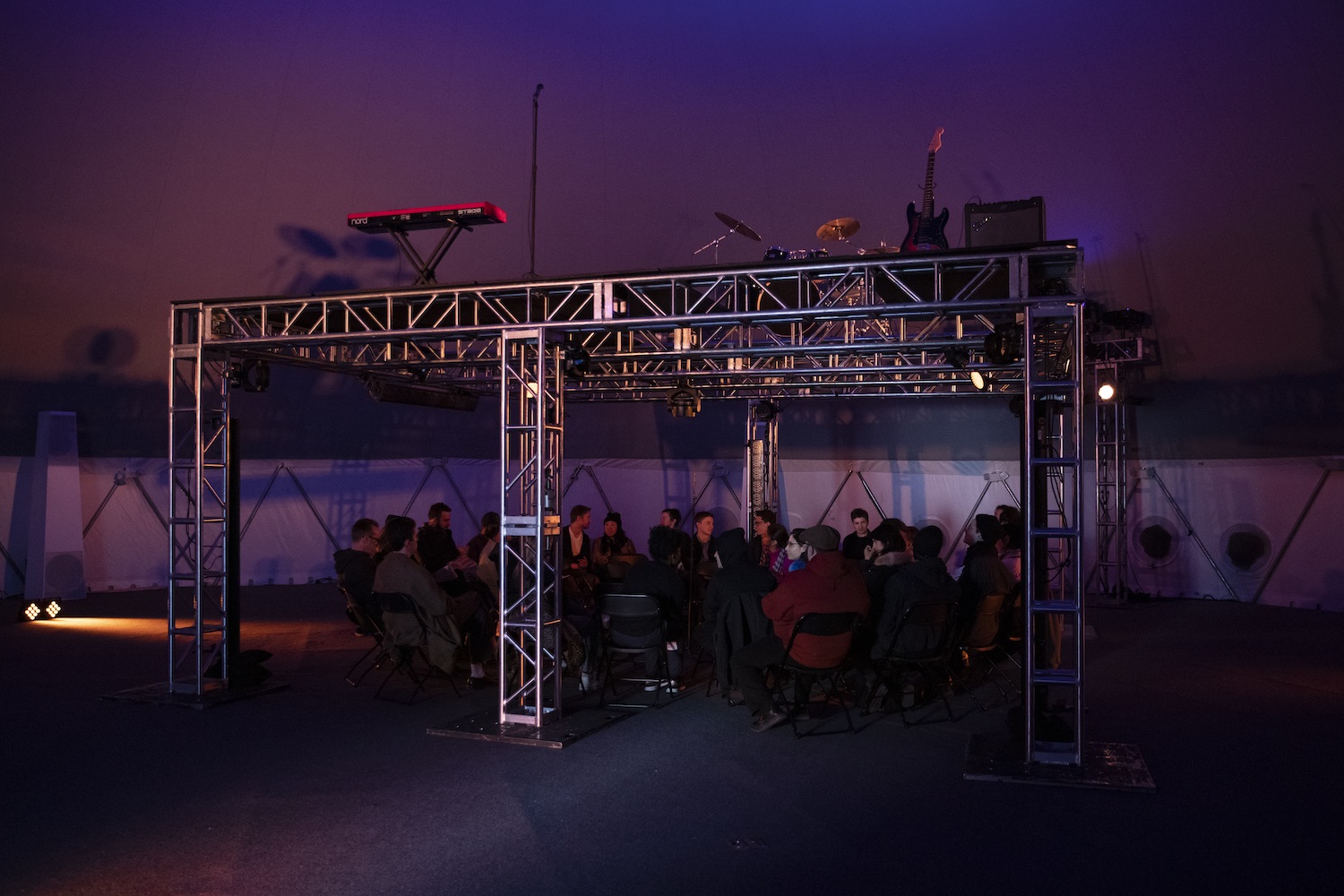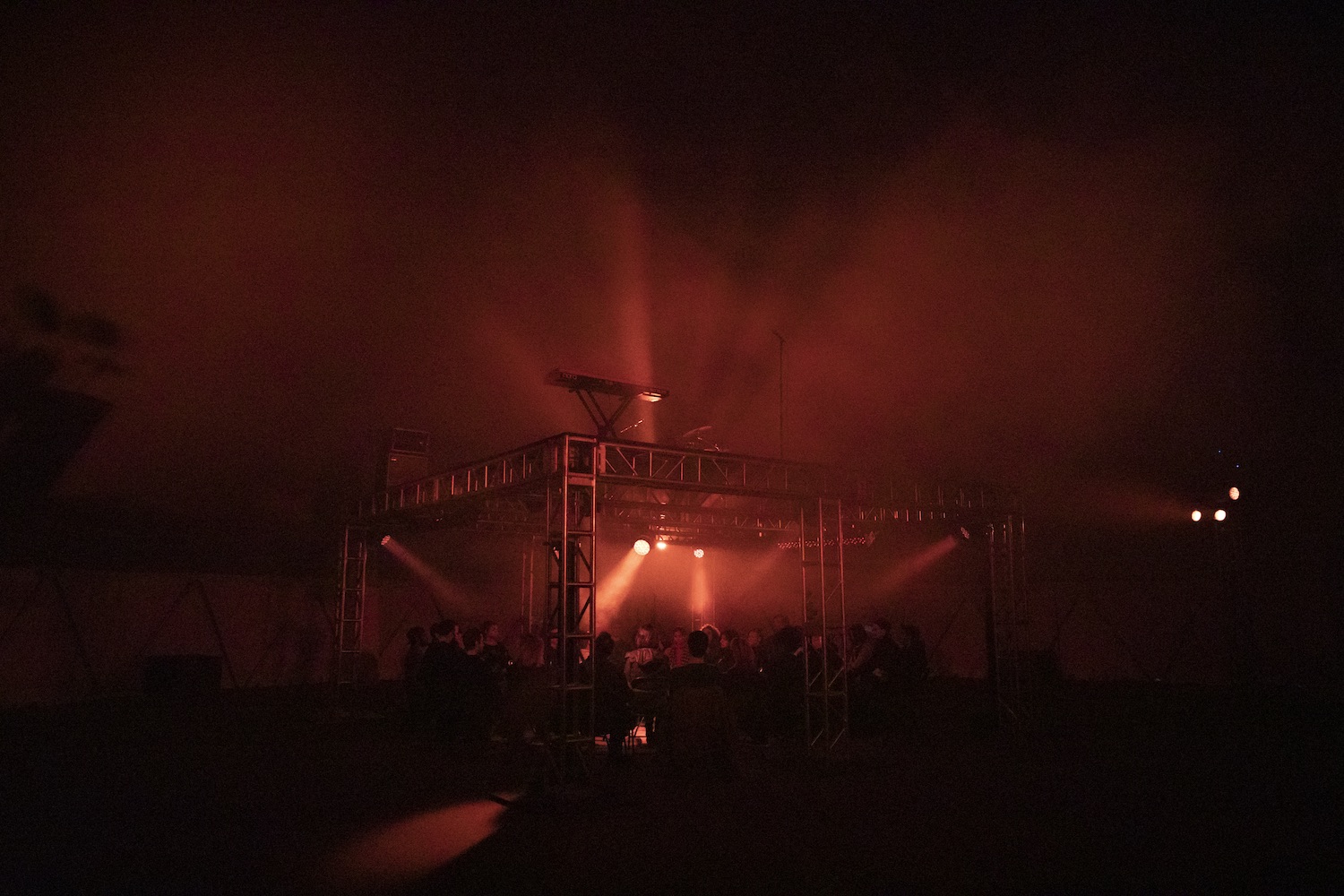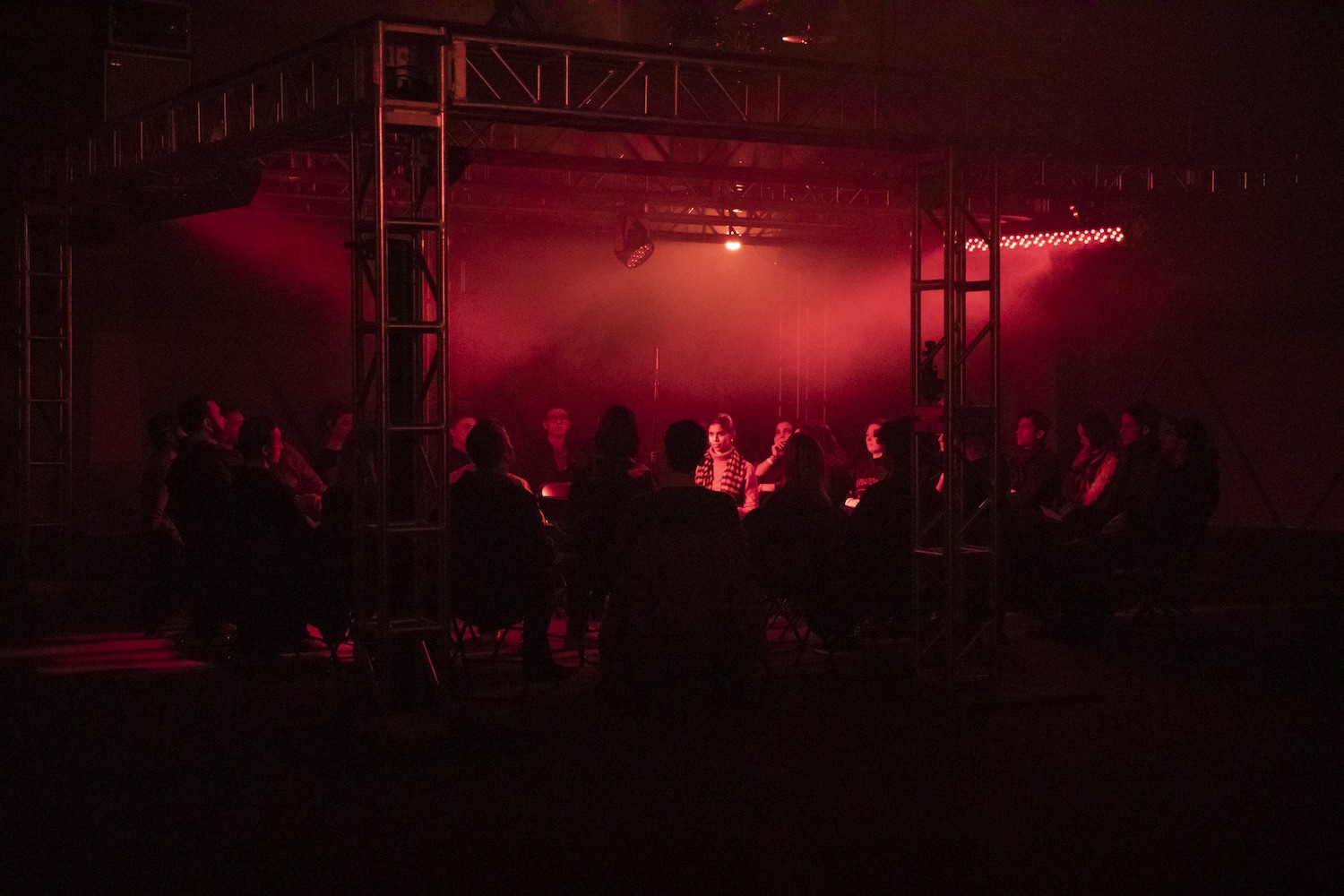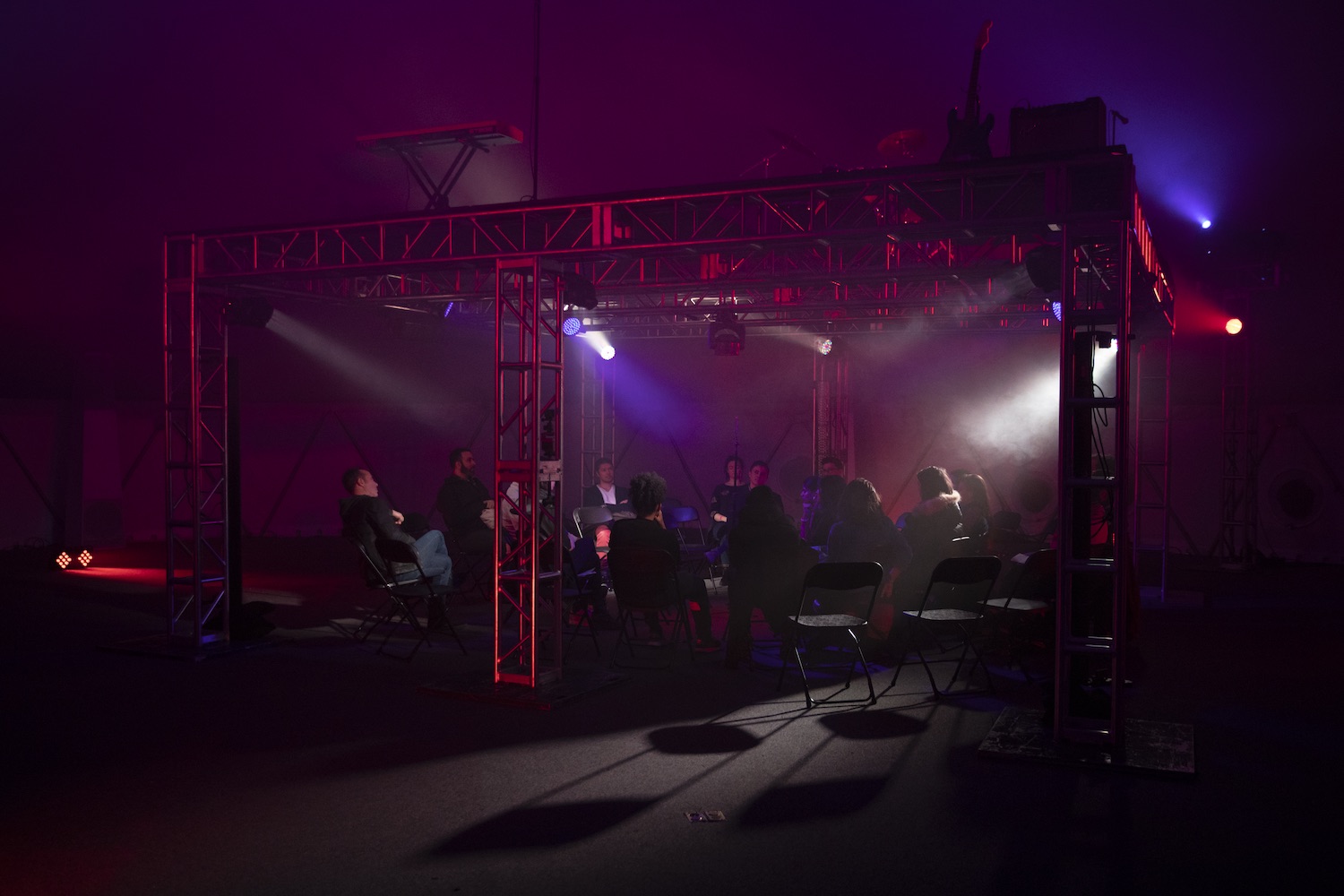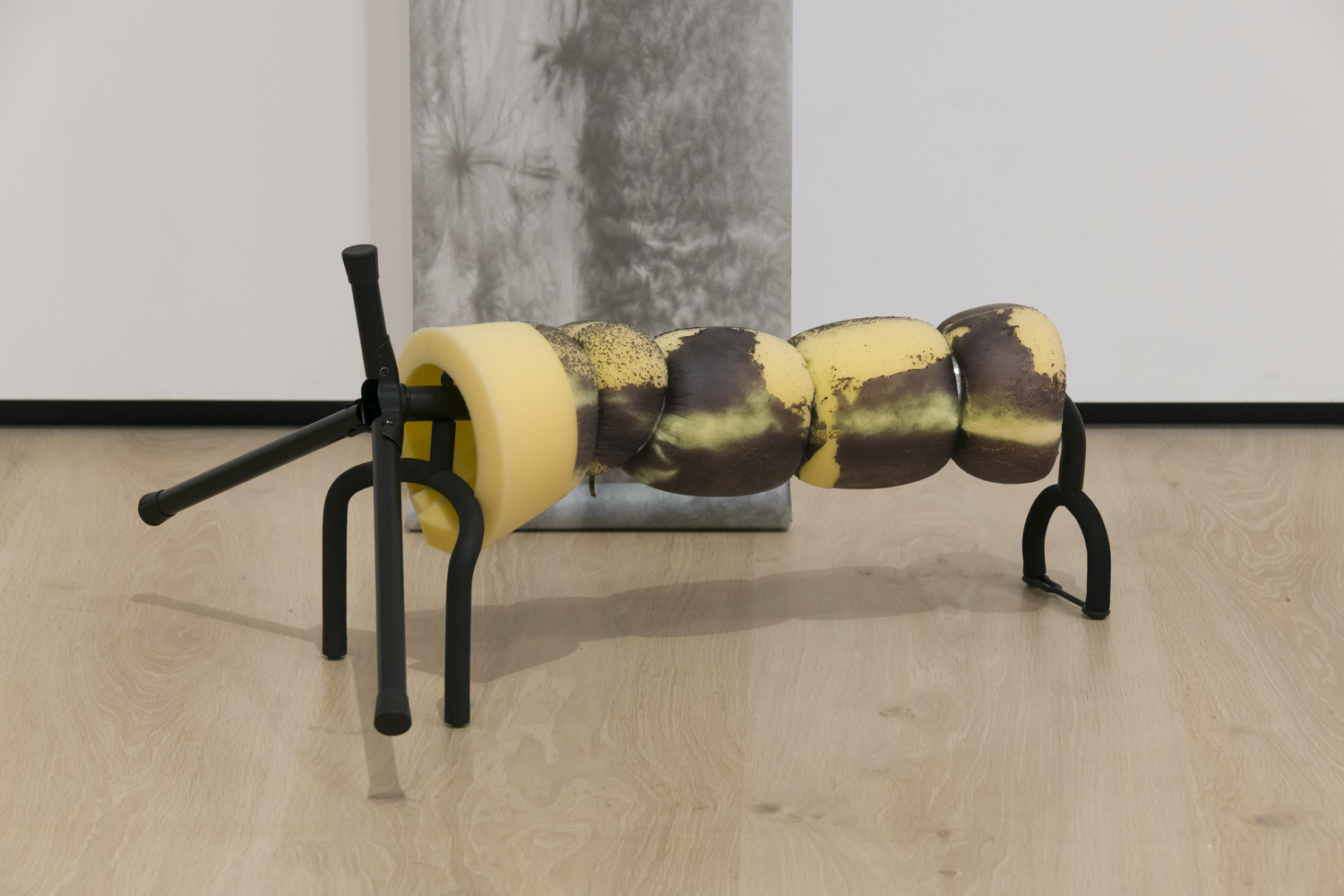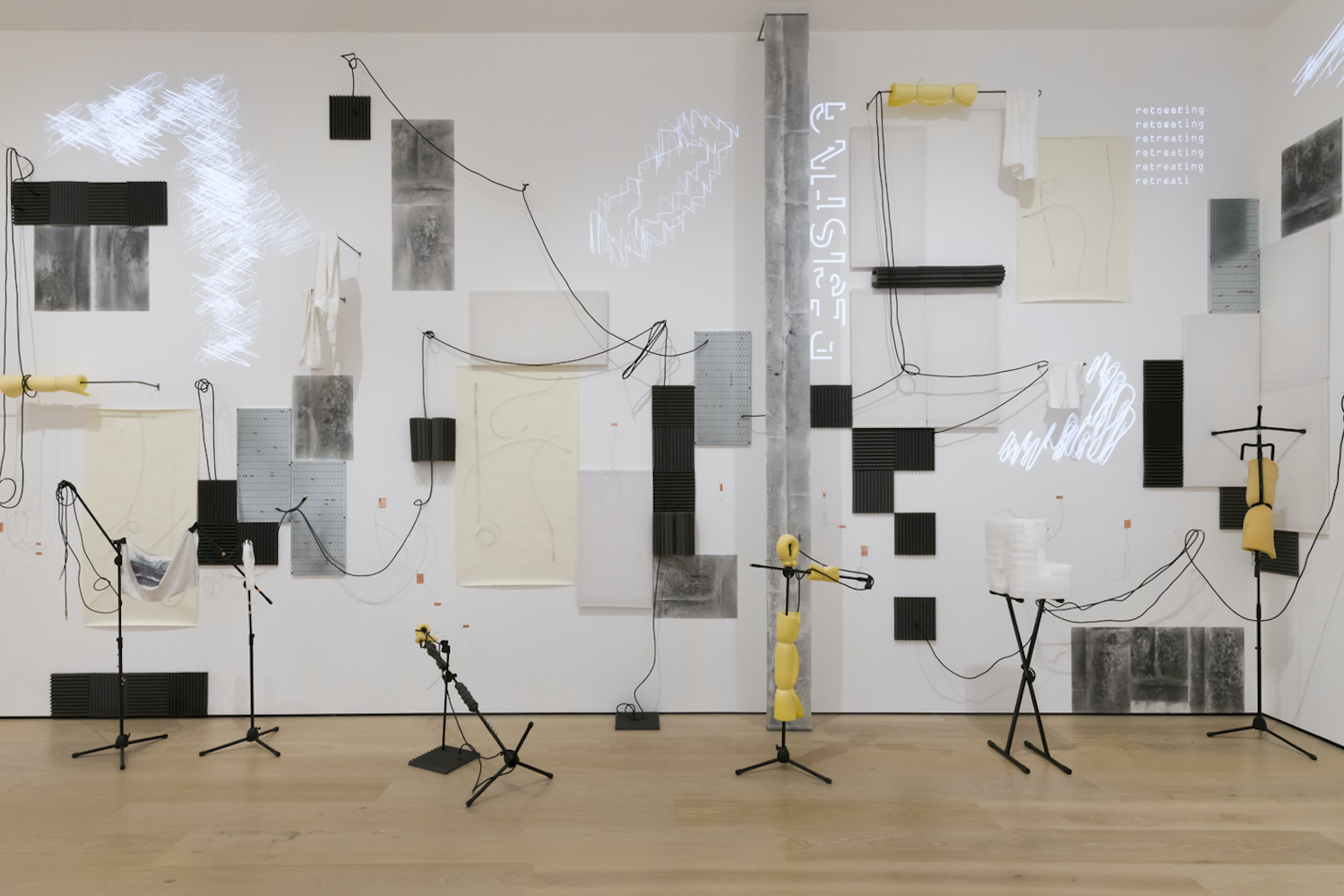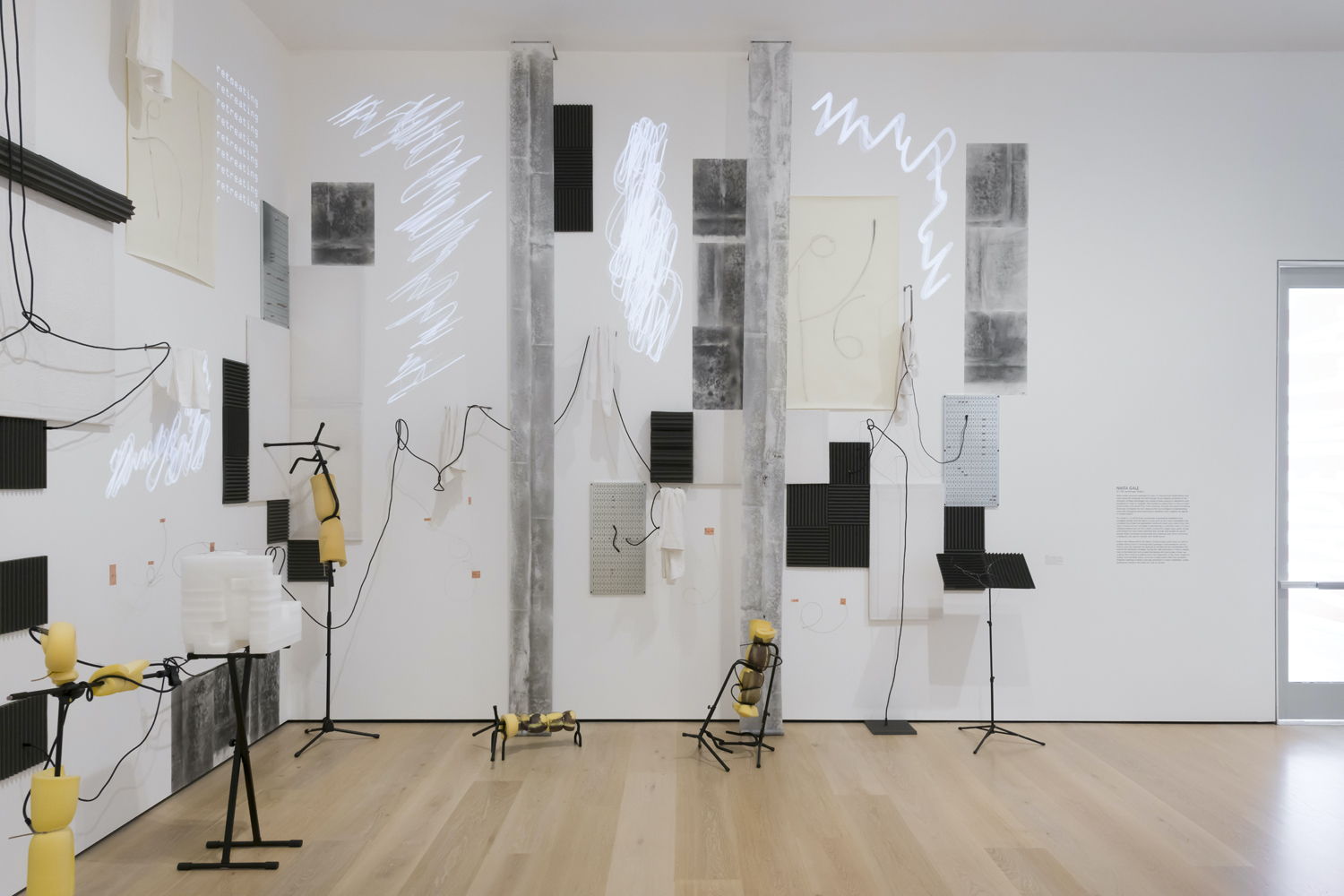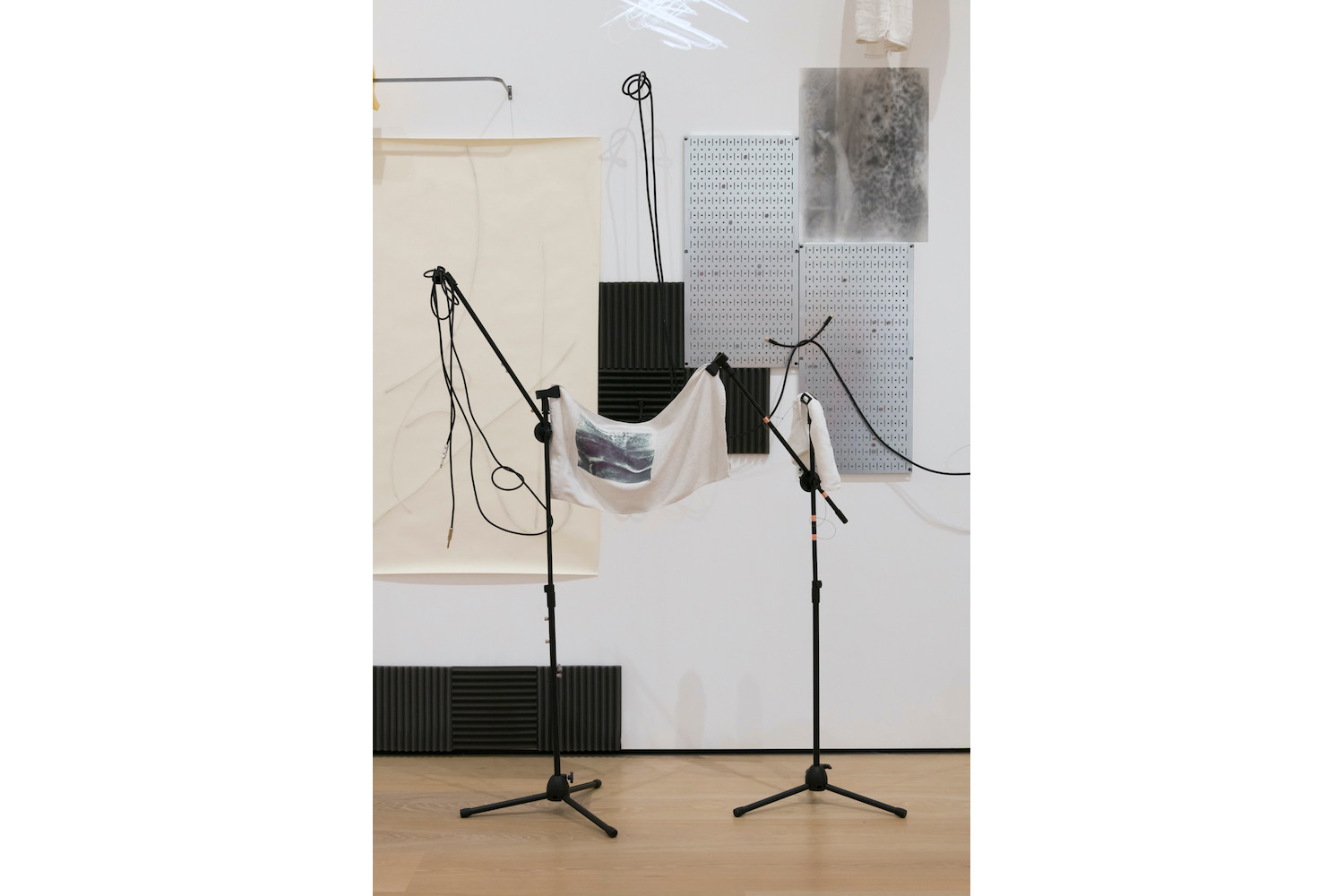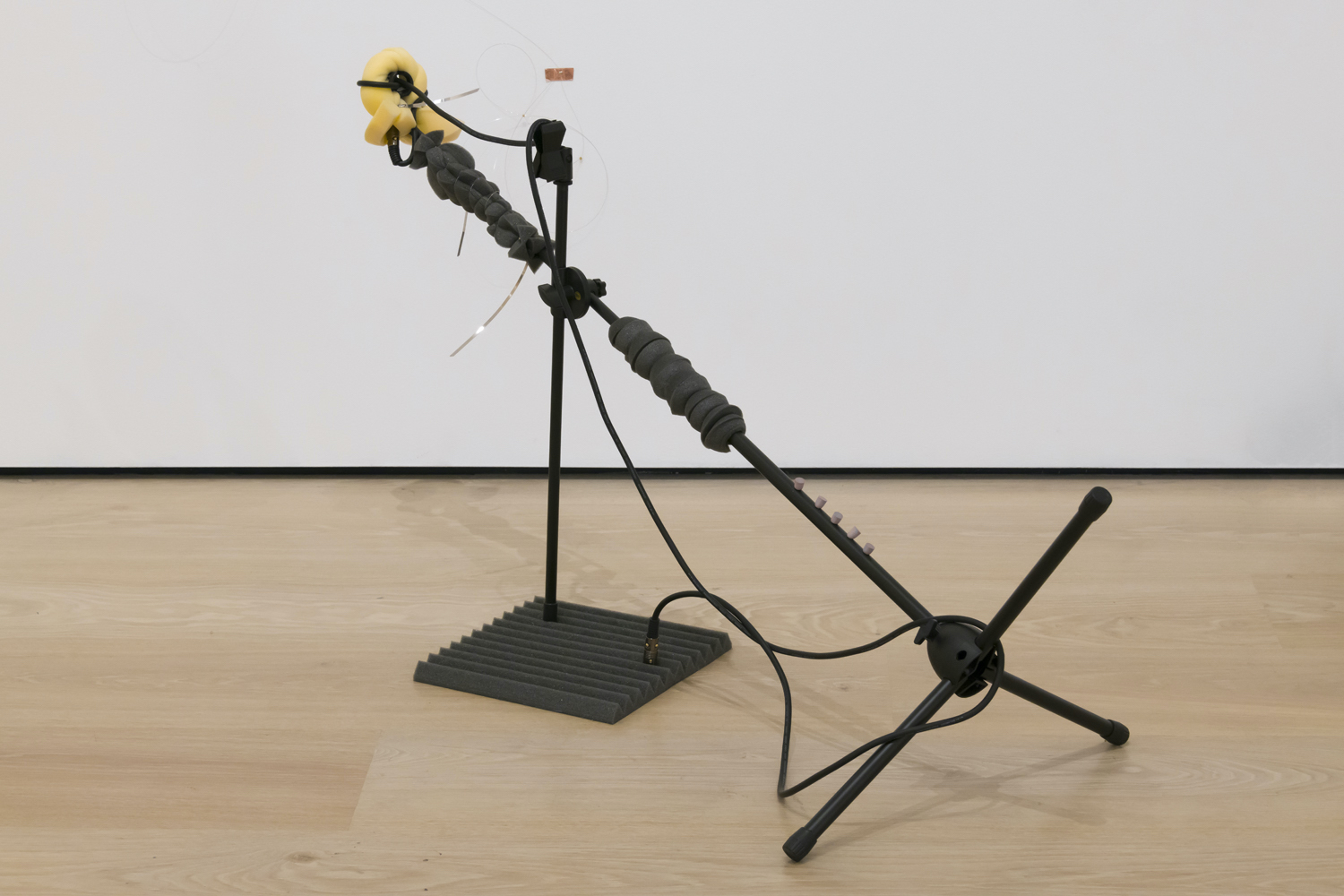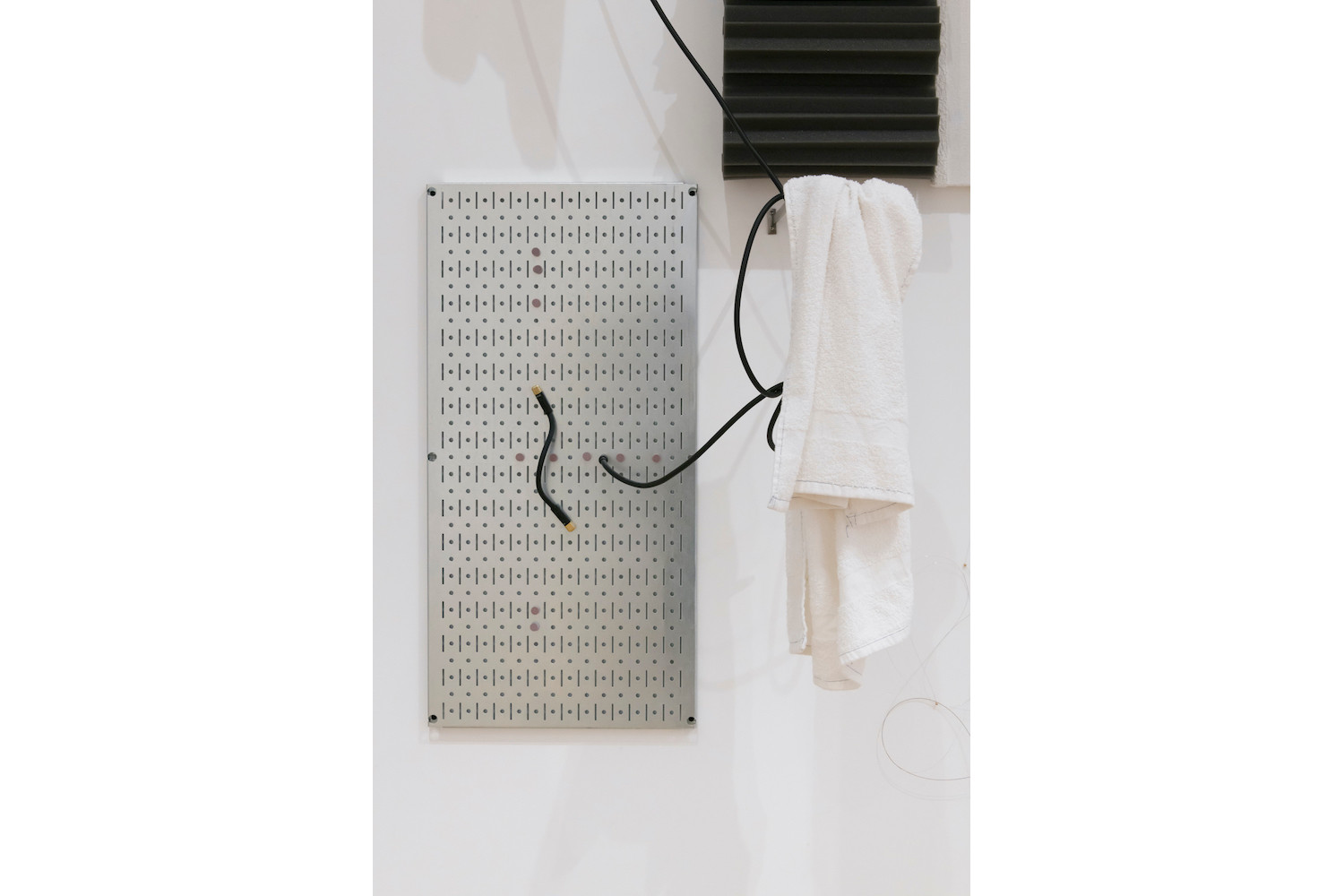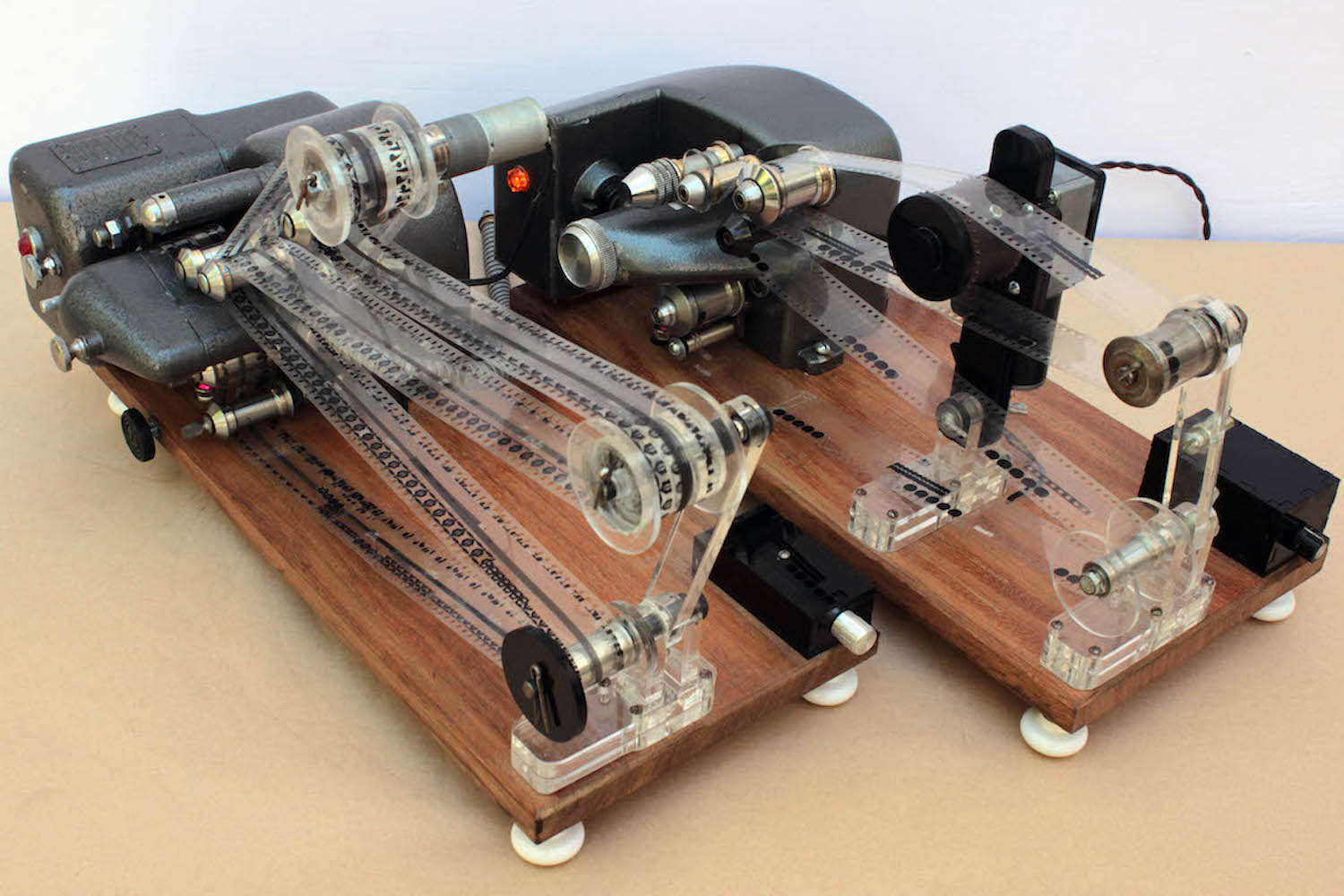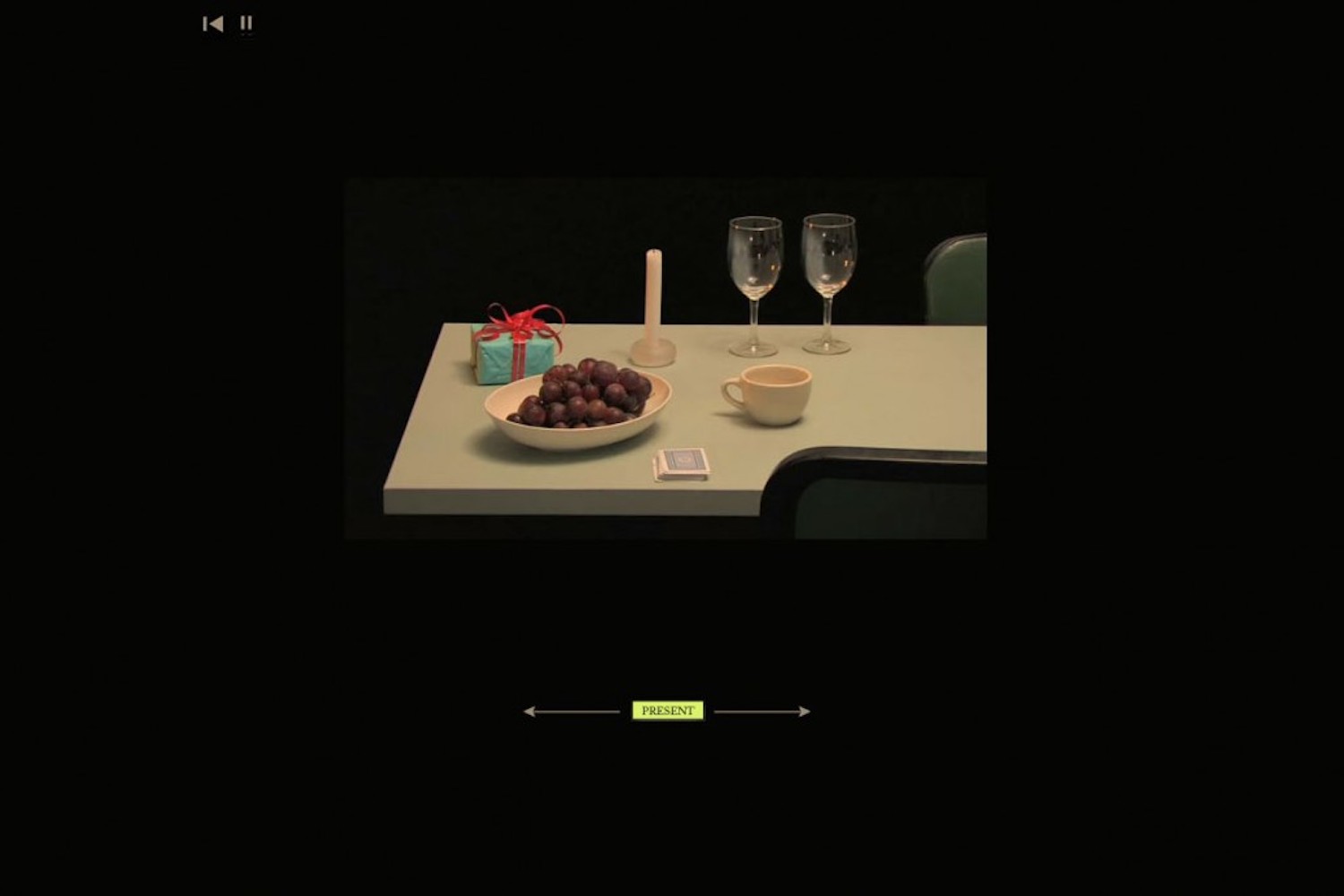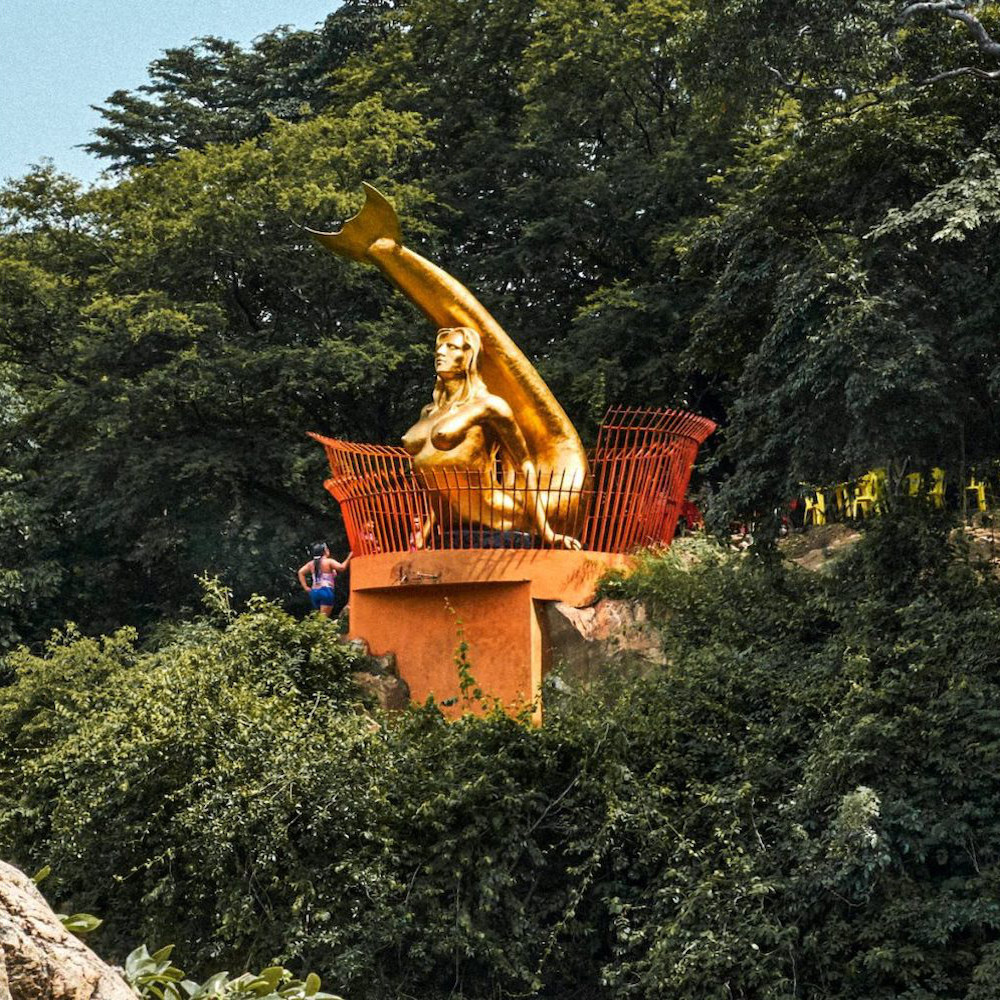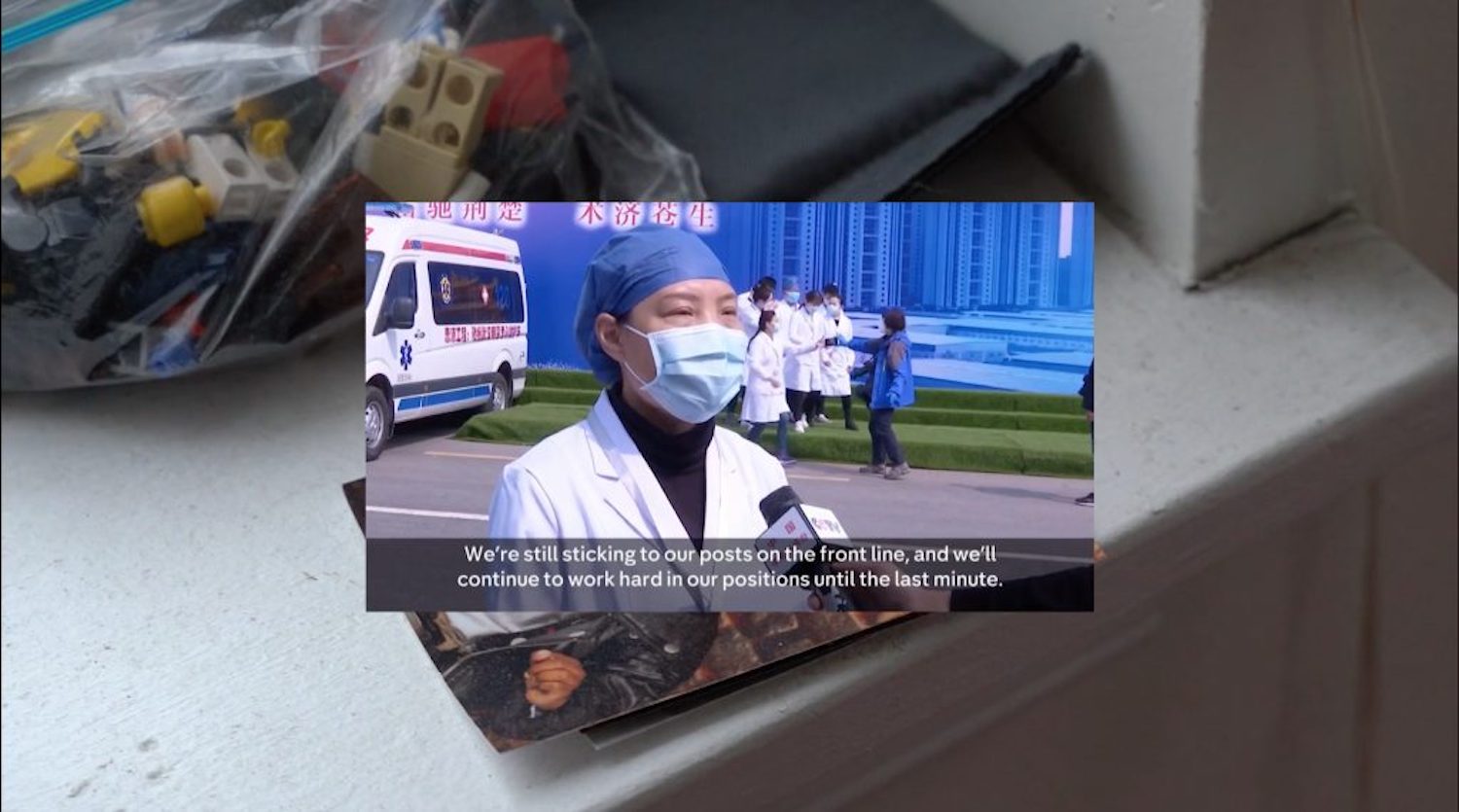“Listening In” is a column dedicated to sound, music, and listening practices in contemporary art and its spaces. This section focuses on how listening practices are being investigated and reconfigured by artists working across disciplines in the twenty-first century.
PRIVATE DANCER, 2020. California African American Museum, Los Angeles. Photography by Elon Schoenholz. Courtesy of the artist and Commonwealth and Council, Los Angeles.
Martha Joseph: Sound is everywhere in your work, from audio samples and references to popular and experimental music to your use of instruments, microphones, and other remnants of technological sound amplification in your sculptures. Your latest installation, PRIVATE DANCER, at the California African American Museum, is based on Tina Turner’s 1984 album of the same name but is entirely silent. Silence here feels like a pointed conceptual and even political strategy. Could you talk about how sound functions, often through its own absence, across your work?
Nikita Gale: In sound theorist Michel Chion’s book Sound he introduces a really great word: athorybia. The word is meant to operate as the opposing term of acousmatic, which describes sounds that are heard or experienced without seeing the source; he defines athorybia as something along the lines of a “magical form of visual isolation.”
I love Chion’s work because of how deeply invested he is in phenomenology and the environmental effects and consequences of sound; as a matter of fact, that word athorybia is even introduced in a chapter titled “Sound and Its Causes.” In the context of introducing this term, he describes a scenario in which something is experienced that should have sound but does not. Because the viewer has typically experienced this object or these materials in other contexts in which they were always accompanied by sound, Chion describes the experience as “diabolical,” which I absolutely love!
This term diabolical calls to mind this idea of — to use a well-loved phenomenological term — immanence, which is the condition of being acutely aware of the materials (and the body) in situations where something has gone wrong or snapped us out of the transcendent experience of, say, a live performance — in essence, a glitch. PRIVATE DANCER is working with a set of materials that point to an aesthetics of live pop music performance — lighting trusses, active dynamic lighting, tons of DMX cables. The feeling is bit uncanny in the presence of materials that all point to the production and framing of sound and yet are not accompanied by any sounds beyond their own noise — the squeaking of gears and whirring of electronic fans.
But silence as a condition can indicate a multitude of divergent qualities: fear, anger, an intention to do harm, exhaustion, pain, rest, fugitivity, arrest. The list goes on, but I think you get the idea.
MJ: Your work is about performance, but nowhere are performing bodies present, and often the infrastructures left behind are in a state of collapse — lights and trusses in shambles on the floor. What does this signal for you in terms of a post-human or post-performance work? And what potential does technology offer if it remains while bodies are gone?
NG: This great question points to an idea that is central to my work: bodies are never entirely absent from what we refer to as technology. So no matter how many moves I make to remove this idea of the figure from these experiments in performance, the figures will always be there, whether that’s in the design and scale of the lighting truss or in the shadows that are cast by the viewer observing the work or in the presence of a larger audience in the case of the AUDIENCING work at PS1 this past February. It’s a part of a larger idea about how technologies and institutions are simply manifestations of the beliefs and ideals of the individuals who design them. As the national conversation has picked up the long-running and now more amplified notion of abolition, I am thinking a lot about ruins — this also nicely aligns with my formal training as an archaeologist — and what these technological infrastructures would become and what shapes they would take after their destruction and collapse. This thought, of course, leads to the even more pressing question of what becomes of the bodies that were formerly framed and enclosed by those structures? I like to leave that question open with the absence of figures.
MJ: You brought up AUDIENCING, which is a work that put on display the act of gathering and collective listening. While I was in the audience, I felt that the seating arrangement forced us to acknowledge the other individuals attending the event. How did you think about constructing this situation?
NG: I wanted to create a situation in which a viewer could experience on a physical level this sense of complicity but also of responsibility. The seating arrangement makes you aware of how your participation as a listener is a part of the visual and physical experience of the work for someone else in the room. The group that you’re sitting with in the performance is an image — it’s really the visual element of the piece, and that image is completely different for every single participant. I loved the idea that despite the fact that the sound and the lighting are the same every time (the PS1 dome was basically a giant playback device), there are forty different images being created in that spiral by each person who is there. I sat in on five of the six performances and they felt so drastically different each time.
I’m very interested in infrastructure, especially the moments where it applies to social behavior. I’m on the board of a group relations organization called GREX, which is the West Coast affiliate of the A. K. Rice Institute for the Study of Social Systems. I was initially introduced to this discipline by Andrea Fraser while I was studying with her at UCLA. In very general terms, group relations is a mode of psychoanalysis that emerged out of a somewhat radical free clinic developed by a group of psychoanalysts who were active during and after WWII. They wanted to develop an experiential learning process by which individuals could learn how authority operates at the group level and how individuals are authorized or deauthorized by the group as a whole. They were trying to understand how fascism had emerged so abruptly despite the fact that many more people disagreed with its beliefs than supported them.
It’s a fascinating practice and there are some incredible organizations who’ve been using it to develop what I consider to be very productive and radical ways of thinking about systemic oppression.
A central element of group relations is the group relations conference, which is an experiential learning activity in which participants sit in a spiral formation, usually about fifty to sixty participants, and then simultaneously report on what they observe happening in the group while also observing how the group may be using them or influencing them. The spiral is referred to as a temporary institution. So it’s a form that “holds” the group but it is also a form that spatially operates as a metaphor — whether that’s for a workplace, a city, a state, a country, and so forth. There’s really no ideal position to occupy in the spiral (people on the periphery report feeling left out despite having the most comprehensive view of everyone in the group, while those closer to the center feel more included but see much less of the group since many people are sitting behind them and views of others are obstructed). So it’s a simple shape but it produces a lot of complex relationships between those sitting in the arrangement.
MJ: Many of the pop icons you feature in your audio work have a distinct and sometimes fraught relationship to image and visibility (Michael Jackson, Tina Turner, Lizzo). I’m thinking through what it means for them to be included through audio alone. Could you talk about this strategy of refusal?
NG: I believe that through using what I like to think of as an aesthetics of immanence, which in the case of sound is either “noise” or “silence,” I’ve been able to open up a lot of different pathways for thinking about refusal. The way that Édouard Glissant takes up the relationship between transparency and opacity is useful here because he aligns transparency with the act of revealing and divulging one’s interior world through speaking and being heard — being heard and also surveilled in a sense — in a language that is intelligible by the structures of power that bind subjects. I think this idea of transparency also has a visual link — that the condition of being seen or being visible is also a kind of transparency that makes legibility in a visual context another — often very lucrative — form of oppression. On a very basic level, I just wanted to remove that additional layer of transparency.
To return to Chion for a moment, he brings up this idea of mythology that gets linked to acousmatic sound in the sense that the sound, or the voices in this case, are not anchored to anything visual when are just listening to them. These voices have exceeded the frame of the body through recording and distribution, and it’s this technological process that, for me, complicates how we as viewers and as an audience relate to these kinds of objects of creative labor. It’s the uncoupling of the body and the effects of its labor — an effect being the sound produced by the physical action of singing — that buries the fact that when we are watching a performance or listening to one, we are watching and listening to highly aestheticized labor.
For me, by using these audio clips and placing them into the context of AUDIENCING, which I like to think of as a kind of listening “work-out,” I’m attempting to displace some of that work back onto the audience. As a listener there’s so much decoding and reorienting that takes place in any given experience, and I really wanted to invite the audience to lean into that condition of sharing space with forty other people who are listening to the same thing you’re listening to but possibly having a slightly-to-entirely different experience. With you.

